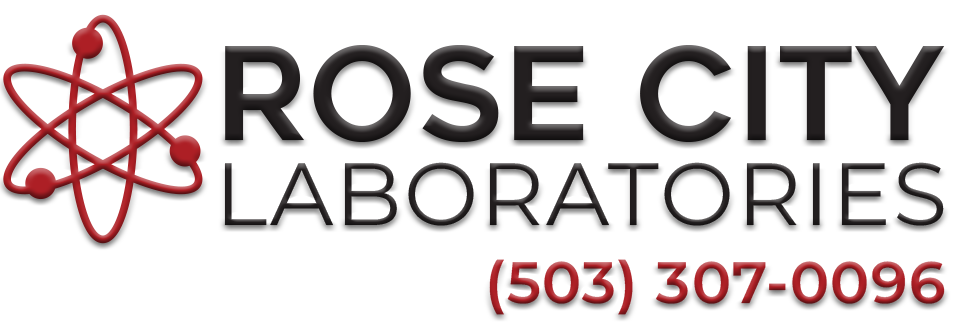THE MICRODOSE, an independent journalism newsletter supported by the U.C. Berkeley Center for the Science of Psychedelics
Story by Jane C. Hu. 03/06/2023
At the beginning of this year, Oregon officially became the first U.S. state to launch psilocybin services. While most of the public’s focus has centered on the people who are providing and receiving these services, that’s actually the final step in the process. Before service centers can operate, they need psilocybin — and Oregon Psilocybin Services (OPS) has established very specific rules around psilocybin manufacturing, specifying that all administered psilocybin must come in an edible form and that it must be derived from Psilocybe Cubensis mushrooms. Psilocybin batches must also be tested for potency before being sent on for use in service centers.
Bjorn Fritzsche is a senior chemist at Rose City Laboratories, a drug testing lab poised to be among the first accredited psilocybin testing labs in Oregon. So far, Rose City has accreditation from the Oregon Environmental Laboratory Accreditation Program (ORELAP), which is the first step for getting approval from OPS to be a psilocybin testing facility. Fritzsche, a chemical engineer, brings nearly a decade of experience in cannabis testing to his new role at Rose City, where he oversees the lab’s psilocybin testing. The Microdose spoke with Fritzsche about how potency testing works and the future of psilocybin in Oregon.
Part of your job is overseeing psilocybin potency testing. Are there already established methods for doing that, or have you had to develop those from scratch?
There are some published methods online for testing psilocybin, but those were all very much for research purposes only, where you don’t have to meet certain standards from the state. Because we’re in a big market, we can’t have a test take half a day, and we want to set it up so that it’s very hard for anyone to screw it up.
Walk me through what your potency testing currently looks like.
First, we need manufacturers to take a representative sample of a batch, which ends up being about five percent of the total batch. We homogenize that by grinding it into a powder, and that’s when the lab work begins. We take about half a gram and make a psilocybin extract using ethanol; that process takes several hours, so currently we usually leave that overnight.
After the extract is ready, we filter out the plant matter from the sample and dilute it so we can use it in a machine called the high pressure liquid chromatograph, or HPLC. That separates out compounds based on how water soluble they are, and it can then tell us about how many parts per million of psilocybin are in the sample. From there, we can calculate the weight percentage of how many milligrams of psilocybin are in each kilogram of the sample.
For psilocybin-assisted therapy at service centers, having consistent doses will be important. Is there currently a way to check for consistency across samples?
There are ways to do that, but it’s not currently a requirement for psilocybin testing. In cannabis testing, the way we typically do that is to run two samples and calculate the relative standard deviation — and that way, we can see if the deviation is too high.
The batch size for psilocybin is pretty small — currently, it’s about a pound, so we hope that for now, batches will be fairly consistent. And we hope that a lot of these centers will be homogenizing their samples by grinding it up, like we do for testing, rather than handing out individual mushrooms, because psilocybin concentration can vary widely depending on the maturity of the individual mushrooms; younger mushrooms usually have higher concentrations of Psilocybin and Psilocin.
By federal law, psilocybin is a controlled substance. Are there special protocols for how to transport samples from manufacturers to the lab, or other security measures you have to take?
The samples we take are just not that big, and the ethanol extraction basically destroys them. The facilities all have security requirements; the lab has a special entrance and cameras. All of our vehicles are GPS-tracked and can be disabled remotely, which is normal for handling something semi-valuable.
What changes do you see on the horizon for the psilocybin testing industry?
What I’m seeing a lot is Acetylpsilocin, a semi-synthetic version of psilocybin. I almost wish the state of Oregon would consider something like that as a possibility in addition to just the mushroom-derived compounds – it’d be easy to test its purity, and the science shows that it’s a prodrug of Psilocin, so it should have the same effects. That would allow more accurate dosage than going the fruiting body route.
Beyond that, it would be great if Oregon eventually wouldn’t limit the industry to Psilocybe Cubensis mushrooms — their potency tops out at 0.7 or 0.8 percent on average, while Psilocybe Azurescens can get up to two percent, and they actually grow wild in Oregon. I also hope that this goes the same route as medical marijuana, and it becomes recreationally legal. The harm potential is even lower than cannabis; I understand why we’re building this program around psilocybin service centers but I think in the long-term we’ll see that wasn’t necessary.
This interview has been edited and condensed for clarity and length.


